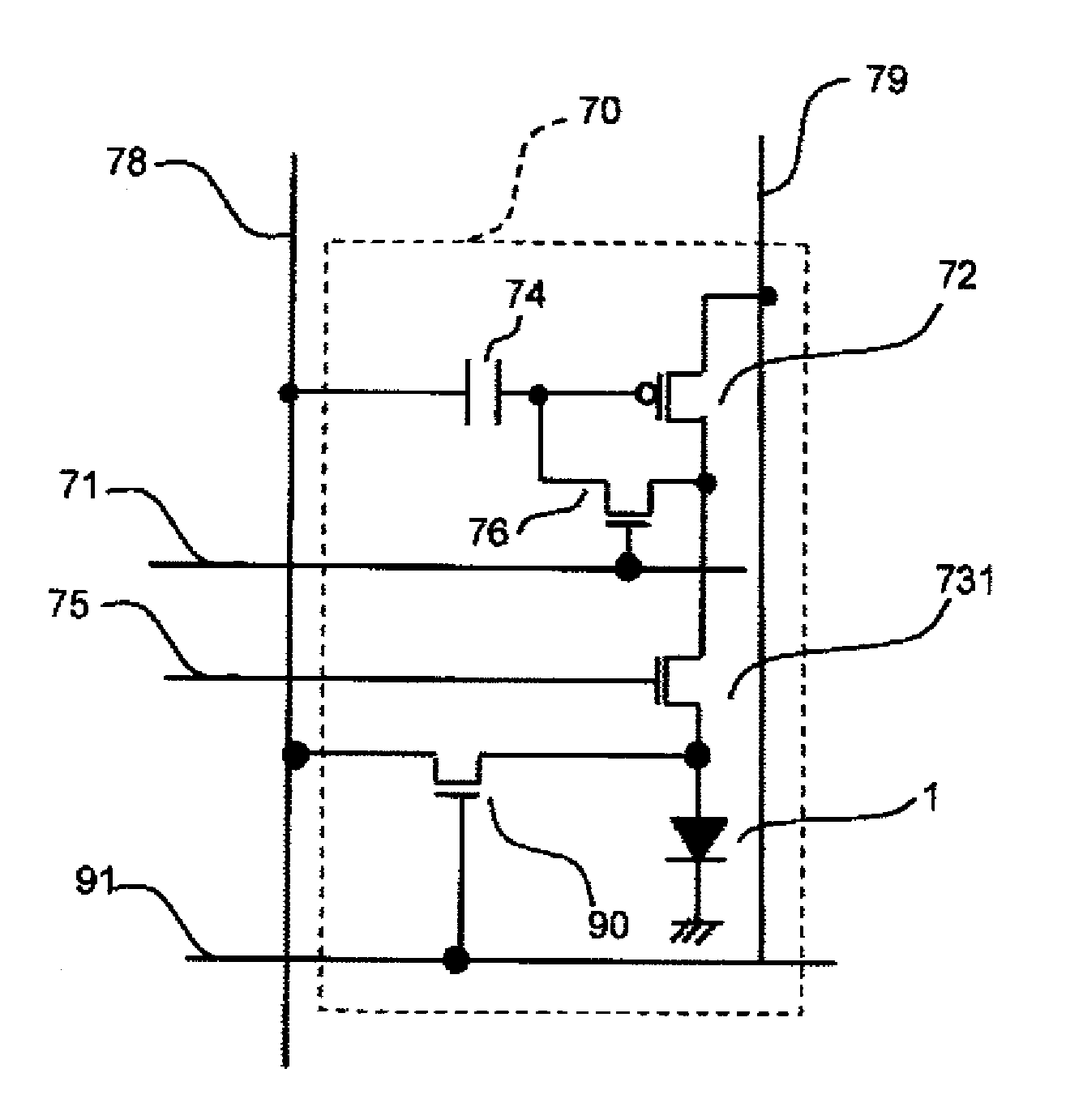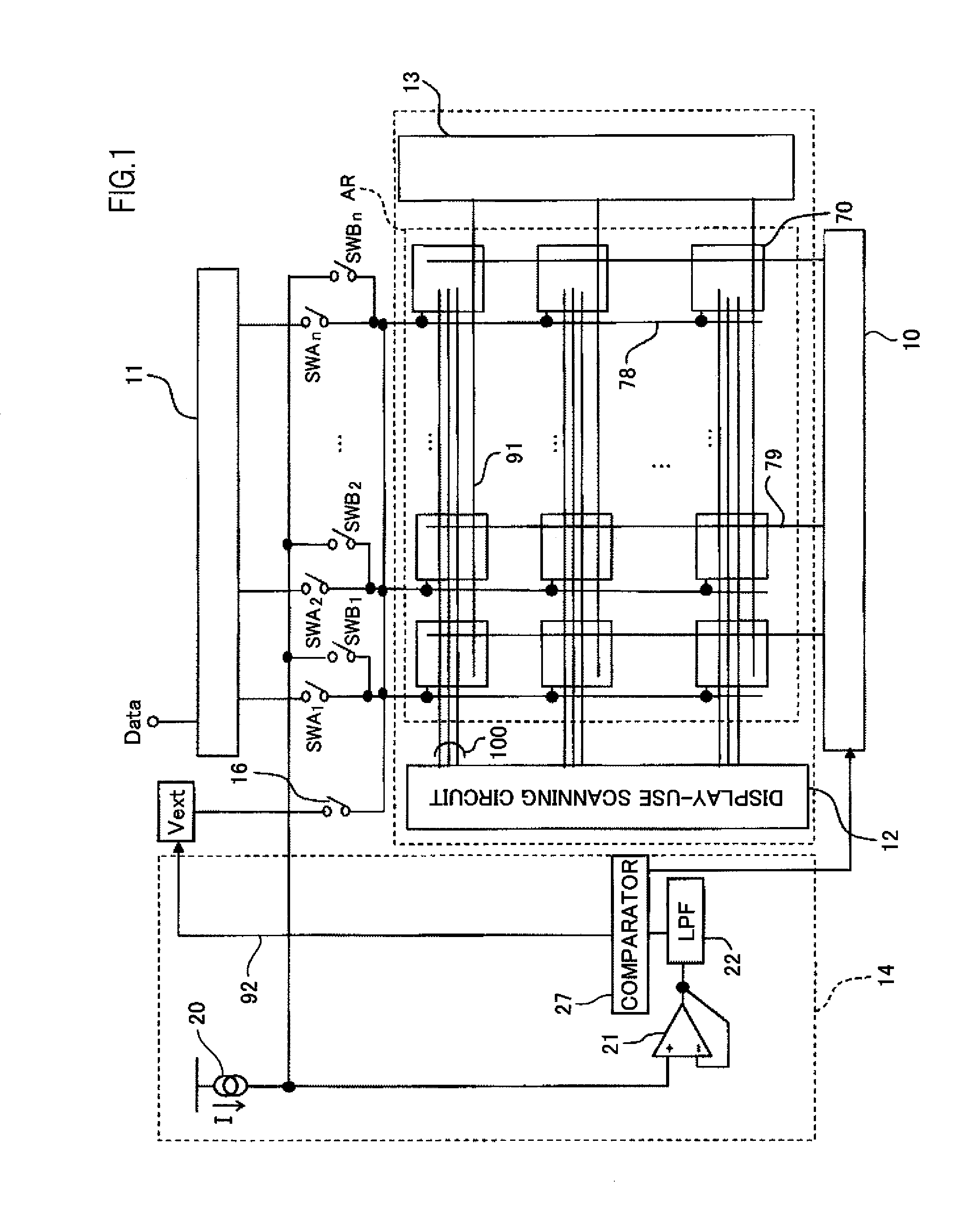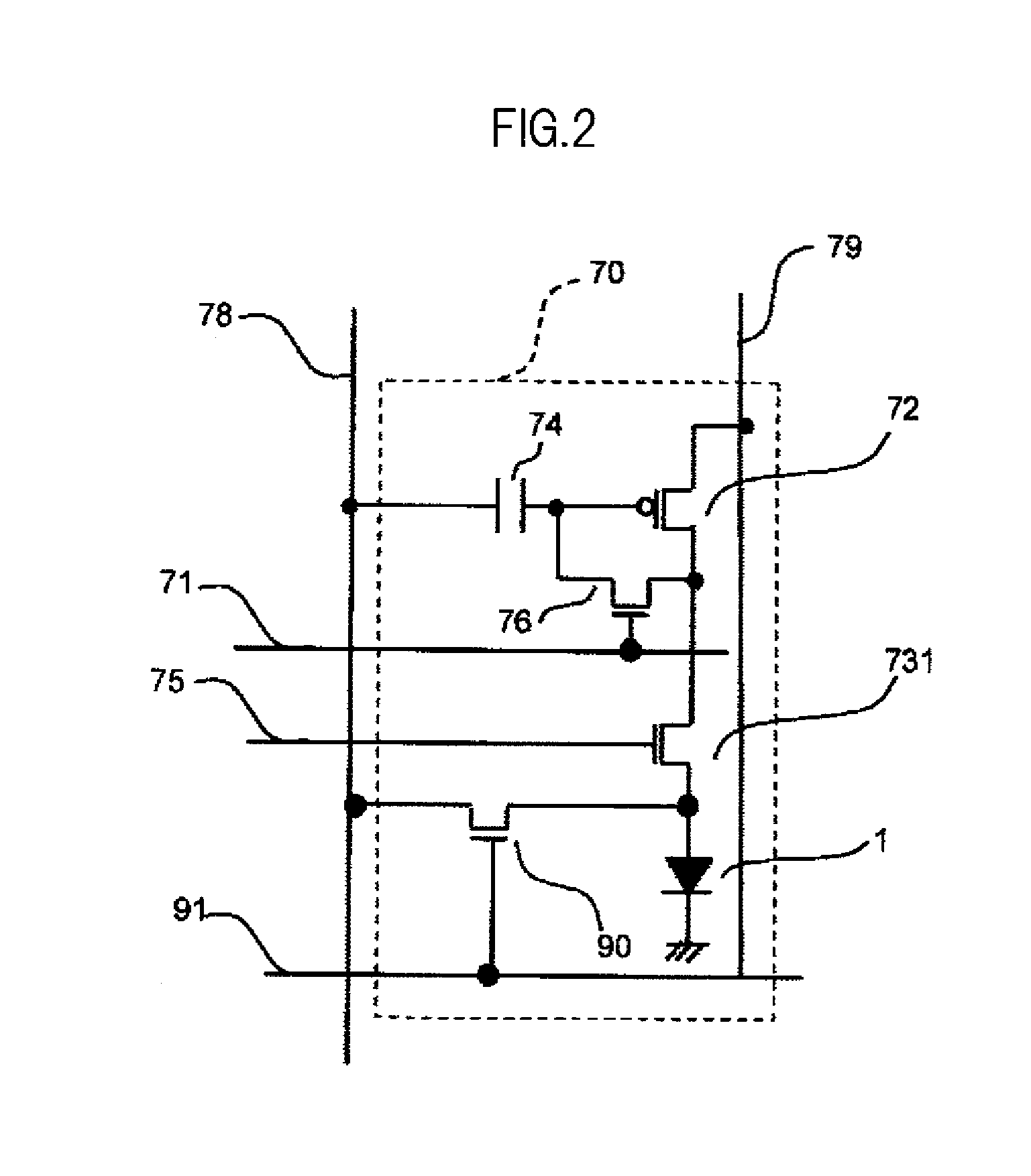Image Display Device
a display device and image technology, applied in the direction of static indicating devices, instruments, etc., can solve the problems of not ensuring precise correction and creating brightness differences between adjacent pixels
- Summary
- Abstract
- Description
- Claims
- Application Information
AI Technical Summary
Benefits of technology
Problems solved by technology
Method used
Image
Examples
first embodiment
[0046]FIG. 1 is a diagram illustrating a schematic structure of an organic EL display panel with a built-in burn-in detection and correction function according to a first embodiment of the present invention.
[0047]In this embodiment, as illustrated in FIG. 1, a characteristics detection unit 14 first causes a constant current to flow from a current source 20 into each organic EL element, and detects the resultant anode voltage of the organic EL element through a buffer circuit 21 and a low pass filter 22. A comparator 27 compares the detected anode voltage against a threshold voltage.
[0048]When the detected voltage is found to exceed the threshold voltage, one of a reference voltage Vref and a power supply voltage Vdd, which are applied as voltages common to all display pixels, is controlled to prevent burn-in.
[0049]In FIG. 1, denoted by reference symbol “10” is a power supply circuit; “12”, display-use scanning circuit; “13”, detection-use scanning circuit; “16”, external voltage co...
second embodiment
[0092]As can be understood from Expression (2), when the gate length L of the driver TFT 72 is not long enough and the Early voltage 1 / λ is not large enough (i.e., λ is not small enough), a brightness difference of 1% is caused in the current driving method and a correction has to be made for each display pixel. Further, under some conditions, there may be display pixels that cannot secure as the source-drain voltage Vds of the driver TFT 72 a voltage equal to or higher than the overdrive voltage Vref−Vdata and, consequently, cannot employ the current driving method. Accurate correction is impossible in this case because the magnitude of the image voltage to be corrected is varied.
[0093]This embodiment provides a solution by enabling all the display pixels to employ the current driving method and then making a normal correction for each display pixel. Enabling all the display pixels to employ the current driving method is accomplished by controlling one of the following voltages (a)...
PUM
 Login to View More
Login to View More Abstract
Description
Claims
Application Information
 Login to View More
Login to View More - Generate Ideas
- Intellectual Property
- Life Sciences
- Materials
- Tech Scout
- Unparalleled Data Quality
- Higher Quality Content
- 60% Fewer Hallucinations
Browse by: Latest US Patents, China's latest patents, Technical Efficacy Thesaurus, Application Domain, Technology Topic, Popular Technical Reports.
© 2025 PatSnap. All rights reserved.Legal|Privacy policy|Modern Slavery Act Transparency Statement|Sitemap|About US| Contact US: help@patsnap.com



